There are many beneficiation processes for hematite iron ore, and the beneficiation equipment used is not the same. Common hematite iron ore beneficiation processes include froth flotation, magnetic separation, gravity separation and roasting process, which means that the raw ore enters the separation process after passing through the crushing and screening, grinding and classifying stages, and the hematite concentrate is separated by flotation equipment, magnetic separation equipment and gravity separation equipment.
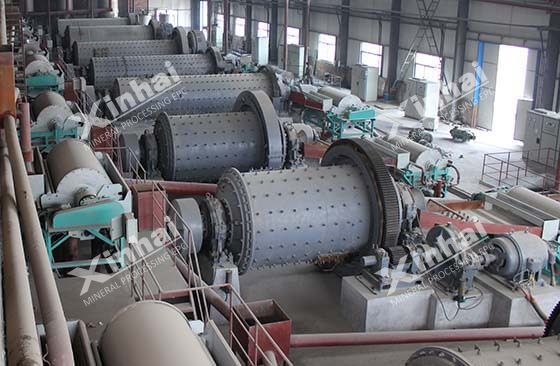
In the following content, we mainly introduce different hematite iron ore beneficiation processes and suitable hematite iron ore beneficiation equipment.
Use the table of contents below to navigate through the guide:
01Hematite Iron Ore Flotation Process and Beneficiation Equipment
Froth flotation is one of the main methods for hematite separation. The principle of flotation is to add the right amount of reagent to the flotation cell according to the difference in the nature of the mineral surface. A large number of dispersed bubbles are generated by agitation and inflation, the mineral particles with good floatability attached to the bubbles, and with the help of the buoyancy of the bubbles mineral particles float up to the surface, forming a foam product. Hematite iron ore flotation can be divided into two types: positive flotation and reverse flotation.
Hematite Positive Flotation
Using an anionic collector to float iron ore from the raw ore and throwing the tailings under coarse size conditions without desliming.
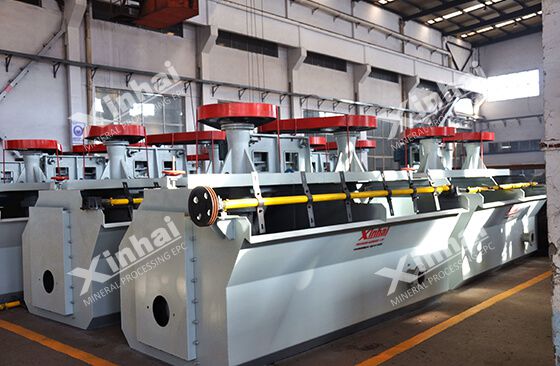
Hematite Reverse Flotation
Commonly used hematite iron ore beneficiation equipment mainly includes mechanical agitation flotation cell (SF flotation cell, JJF flotation cell and BF flotation cell), and air-inflation agitation flotation cell (KYF flotation cell, XCF flotation cell).
In practical applications, it is more suitable for small and medium-scale hematite iron ore processing plant to adopt air-inflation mechanical agitation flotation cell with slurry suction tank or mechanical agitation self-absorption flotation cell; for large and extra-large hematite beneficiation plant, it is more appropriate to use air-inflation mechanical agitation flotation cell in roughing and scavenging.

02Hematite Iron Ore Magnetic Separation Process and Beneficiation Equipment
Magnetic separation of hematite iron ore is to use the magnetic difference of minerals to achieve separation in a non-uniform magnetic field. The magnetic mineral particles are magnetized under the action of the uneven magnetic field, so that they are attracted to the cylinder by the attractive force of the magnetic field, and subsequently carried by the rotating drum to the discharge end. Hematite magnetic separation can be divided into two types: weak magnetic-strong magnetic separation and strong magnetic-flotation.
Weak Magnetic-Strong Magnetic Separation
After weak magnetic separation, the tailings are concentrated by strong magnetic roughing and scavenging. The coarse concentrate is obtained through strong magnetic roughing, and then the magnetic separator is used for concentration.
.jpg)
Strong Magnetic-Flotation
The coarse concentrate is selected by strong magnetic separation, and the hematite concentrate is obtained by flotation of the finely ground coarse concentrate, while the gangue minerals are directly discharged.
Commonly used hematite beneficiation equipment mainly includes: wet magnetic separator (high gradient pulsation magnetic separator), dry magnetic separator (magnetic drum), etc.
High gradient pulsation magnetic separator is suitable for processing finer hematite, the upper limit of the feed size is 2mm.
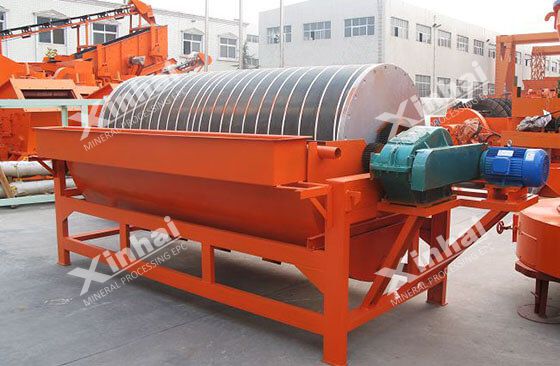
The magnetic drum is suitable for processing coarser hematite, with a particle size range of 30mm or less, and it has a higher magnetic field and a good separation effect.

03Hematite Iron Ore Gravity Separation Process and Beneficiation Equipment
Gravity separation of hematite iron ore is to use the difference in particle size (or specific gravity) of hematite and other gangue ore, and is subjected to gravity, fluid dynamics and other mechanical forces in a moving medium to achieve ore particle separation. The heavy separation of hematite iron ore mainly includes jig weight separation, shaker weight separation and chute weight separation.
Jigging Gravity Separation: Based on the different specific gravity of minerals, stratification is carried out according to the specific gravity in the vertically moving variable-speed medium flow. The minerals with small specific gravity are located in the upper layer, and the minerals with heavier specific gravity are located in the lower layer. The materials are separated by the action of machinery and water flow.

Shaking Table Gravity Separation: According to the different density of minerals, shake table make longitudinal reciprocating motion, make rush flow and the bed surface differential motion powered by transmission mechanism. Materials distributed in a fan shape on the table according to different particle size. The transmission mechanism is used to drive the bed surface to make longitudinal reciprocating motion, making rushing flow and bed surface differential motion with vertical stratification force and parallel separation. The concentrate, secondary concentrate, medium ore and tailings can be intercepted in sequence.
Spiral Chute Gravity Separation: Depending on the specific gravity of the mineral, the combined force of water flow, mineral gravity, and friction between the mineral particles and the bottom surface of the tank causes the minerals to settle in different areas in the tank according to their specific gravity, and the mineral particles with small specific gravity are taken away by the water flow, leaving behind particles with large specific gravity.
Hematite ore beneficiation equipments mainly includes jigs, shaking tables, and spiral chutes.
Jig machine is suitable for processing coarse-grained hematite, with a separation particle size range of 30 (20)~0.5mm, simple process operation, large equipment processing capacity and strong adaptability.

Shaking table is suitable for processing hematite with finer particle size, with a separation particle size range of 2~0.037mm, reliable equipment, clearly visible ore belt distribution, rich ore is higher than other beneficiation methods, and easy to manage.
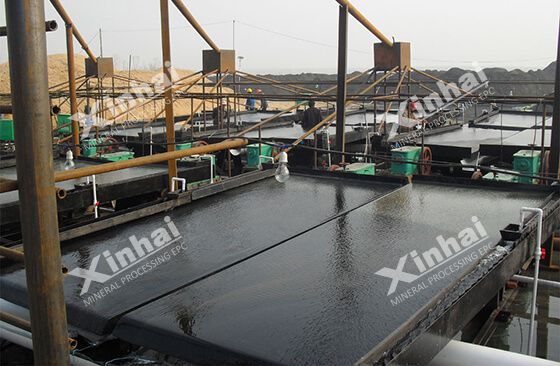
Spiral chute is suitable for processing fine-grained hematite with low mud content, and the separation particle size range from 0.1 to 0.37 mm. It has a simple structure, strong adaptability, large processing capacity and low overall cost.
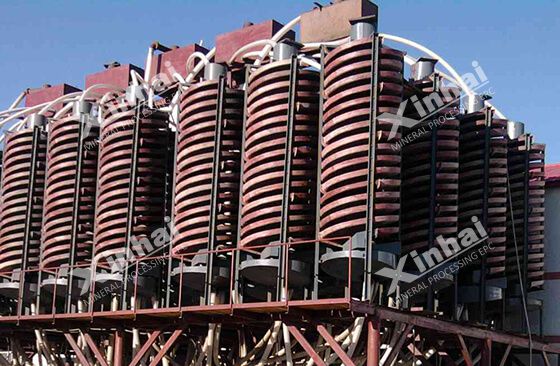
04Roasting-Magnetic Separation Process and Beneficiation Equipment
The roasting-magnetic separation process is roasting under certain temperature and atmosphere conditions to make hematite or false hematite undergo a reduction reaction and transform it into magnetite, and then use the magnetic difference between iron minerals and gangue minerals for magnetic separation. Election to obtain iron concentrate. The commonly used hematite iron ore beneficiation equipment is a weak magnetic field magnetic separator (permanent magnetic drum separator).
Permanent magnetic drum separator can be used for hematite pre-selection, rough separation, concentration, etc. The selected particle size ranges from 2 to 10 mm, with strong adaptability, high magnetic separation efficiency and long service life.

The above is the introduction of common hematite iron ore beneficiation technologies and beneficiation equipment. In the actual beneficiation plant, you should look for professional hematite equipment manufacturers or manufacturers with beneficiation qualifications, and customize the hematite iron ore beneficiation process and equipment that meet your actual conditions through beneficiation test analysis. Configure mineral processing equipment to achieve the ideal return on investment.


 marketing@ytxinhai.com
marketing@ytxinhai.com  0086 13810327080
0086 13810327080 






































































































 CHAT
CHAT MESSAGE
MESSAGE


.jpg)












